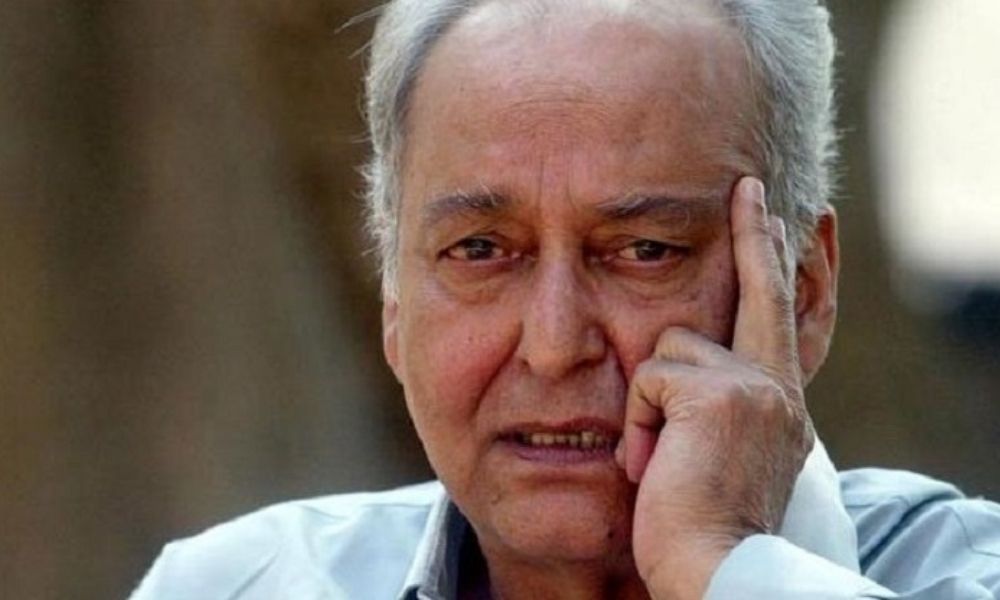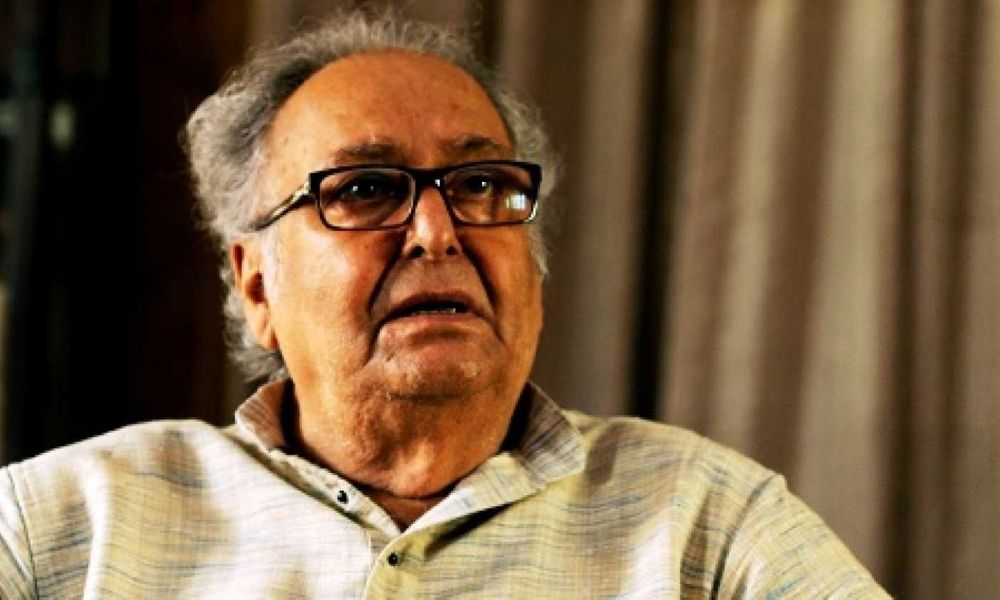Soumitra Chatterjee inhaled him toward the end in a Kolkata clinic on Sunday. Soumitra was admitted to the medical clinic after he tried positive for COVID-19 on October 6. The legend, known for his coordinated efforts with Satyajit Ray, was a beneficiary of the Padma Bhushan, Dadasaheb Phalke Award, Sangeet Natak Akademi Award, other than winning three National Film Awards. Conceived on January 19, 1935, Soumitra Chatterjee took in acting from noted theatre character Ahindra Choudhury. After at first getting dismissed for the function of Apu, Chatterjee, at last, made his acting presentation with Satyajit Ray‘s Apur Sansar (1959), which was the third piece of the two, at last, took a shot at fourteen movies including Abhijan, Charulata, Kapurush, Aranyer Din Ratri, Ashani Sanket, Sonar Kella and Joi Baba Felunath.Soumitra was conceived in Mirzapur Street (presently Surya Sen Street) close to Sealdah railroad station, in Calcutta in 1935. The initial ten years of his initial life were spent in Krishnanagar in West Bengal. The town affected by dramatist Dwijendralal Ray, likewise from Krishnanagar, had a thriving performance centre culture, with various little auditorium gatherings. His granddad was the leader of one such gathering while his dad, however legal advisor by calling and later an administration specialist, additionally functioned as a beginner entertainer. Supported by the acclaim he got for his acting in school plays, steadily his advantage in theatre developed with spending years.He was a dear companion of celebrated theatre character, Mrityunjay Sil who is frequently viewed as a vital effect on his career. Soumitra and his family moved to Howrah where he concentrated in the Howrah Zilla School and Calcutta during his initial years. Soumitra moved on from the City College, Kolkata with distinction in Bengali writing, as a graduating understudy of the University of Calcutta. He lived for a couple of years in Calcutta in Satyajit Ray’s old loft at 3-lake sanctuary street. While still an understudy, he mastered acting under noted entertainer head of Bengali theatre Ahindra Choudhury. The play not just set a norm for representing him, yet additionally, help cosmetics his psyche to turn into an entertainer. He figured out how to meet Bhaduri, through his companion’s mom, entertainer Shefalika Putul. However, he met Bhaduri, towards the finish of his profession, when his performance centre had shut, all things considered throughout the following three years, till Bhaduri’s passing in 1959, Chatterjee made him a coach, and took in the art of acting through their customary associations. He even showed up in a little function in one of Bhaduri’s creations. Along these lines, he began his vocation working in All India Radio as a host, While he was there he began seeking after a profession in films. He came in contact with Ray during the projecting for Aparajito (1956), who was searching for new faces. Beam thought he had the correct look, anyway discovered him, age 20, and barely out of school, excessively old for the function of juvenile Apu. Beam recalled that him and offered him the function of grown-up Apu two years later. Meanwhile, he was dismissed in his screen test for Bengali movie, Nilachale Mahaprabhu (1957)Chatterjee had gone on the arrangements of Ray’s fourth film, Jalsaghar (1958) to watch the shoot. He was uninformed that he had just been chosen for the lead spot in the Apu set of three. Soumitra would proceed to team up with Ray in fourteen movies. After Apur Sansar, he additionally worked with Sharmila Tagore in some of Ray’s movies, aside from working with driving star entertainer of the period, Uttam Kumar, with whom he has regularly been analyzed, in eight films. Chatterjee was projected in assorted functions by Ray and a portion of the tales and screenplays that Ray composed were supposed to be composed in light of him. He was the principal individual who depicted the notorious Bengali detective Feluda. Satyajit Ray made a few delineations of Feluda dependent on Soumitra’s body figure and look during the 1970s Feluda books. After him, Sabyasachi Chakrabarty played the function of the notorious Bengali saint Feluda during the 1990s. Soumitra had moved toward Satyajit Ray to propose a name for a little magazine established by Soumitra and Nirmalya Acharya in 1961. Satyajit Ray had named the magazine Ekkhon (Now), he planned the debut cover page and showed the cover pages routinely even after Soumitra had quit altering the magazine. Nirmalya kept altering the magazine, and a few of Ray’s contents were distributed in the magazine.

Other than working with Ray, Soumitra dominated in coordinated efforts with other notable Bengali chiefs, for example, Mrinal Sen and Tapan Sinha. He procured basic approval for his function of an impostor in Mrinal Sen’s Akash Kusum (1965). He was similarly certain about playing the brave pony riding lowlife in Tapan Sinha’s Jhinder Bandi (1961) giving the incredible Uttam Kumar an extreme test. In the sentimental film Teen Bhubaner Pare (1969), he imparted the screen to entertainer Tanuja, the film was noted for his “flashy” way of acting. Other than films, Chatterjee kept acting in Kolkata-based Bengali theatre and furthermore distributed more than 12 verse books.
In 1986, he assumed the function of a swimming trainer in movie Kony (1986) coordinated by Saroj Dey, who was important for the film aggregate Agragami. The film is about a little youngster from a ghetto, who needs to turn into a swimmer. Later in a 2012 meeting, he called Kony probably the best film of his vocation. He even utilized film’s expression “Battle Koni-battle” in difficult situations, as a serenade to himself to lift his “maturing spirits”. The expression had gotten mainstream with working-class Bengalis at that point.
He supplanted Mrityunjay Sil as the lead craftsman in 1958. Mrityunjay Sil was at the pinnacle of his performance centre vocation around then. Yet, because of private matters, he recommended his companion, Soumitra’s name. However, he before long found employment elsewhere.

Following a two-long term occupied vocation as the main man of Bengali film, he got back to theatre in 1978, with his creation Naam Jiban, organized at Biswarupa Theater in Kolkata. Other than acting, he has composed and coordinated a few plays, interpreted a couple and furthermore spread out to verse perusing in late many years.
Since November 2010, he has been consistently acting in the lead spot of the play Raja Lear coordinated by Suman Mukhopadhyay, a play dependent on King Lear by William Shakespeare. Soumitra has gotten far and wide basic and mainstream awards for his acting in the play.








